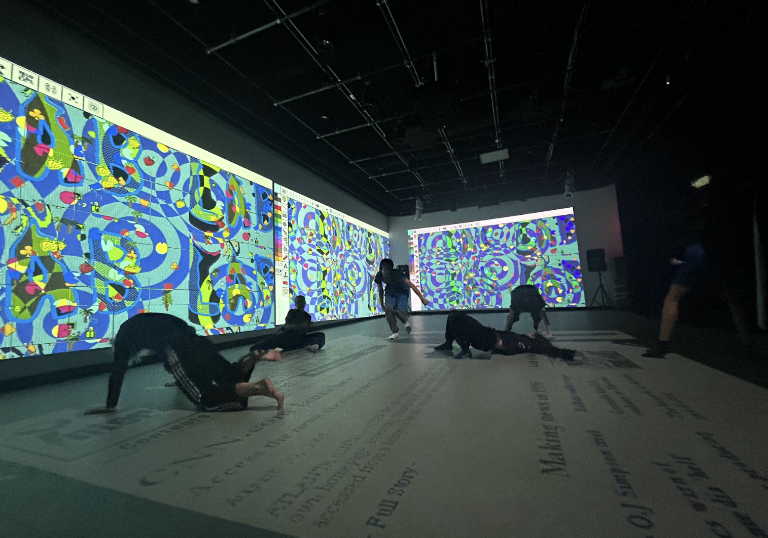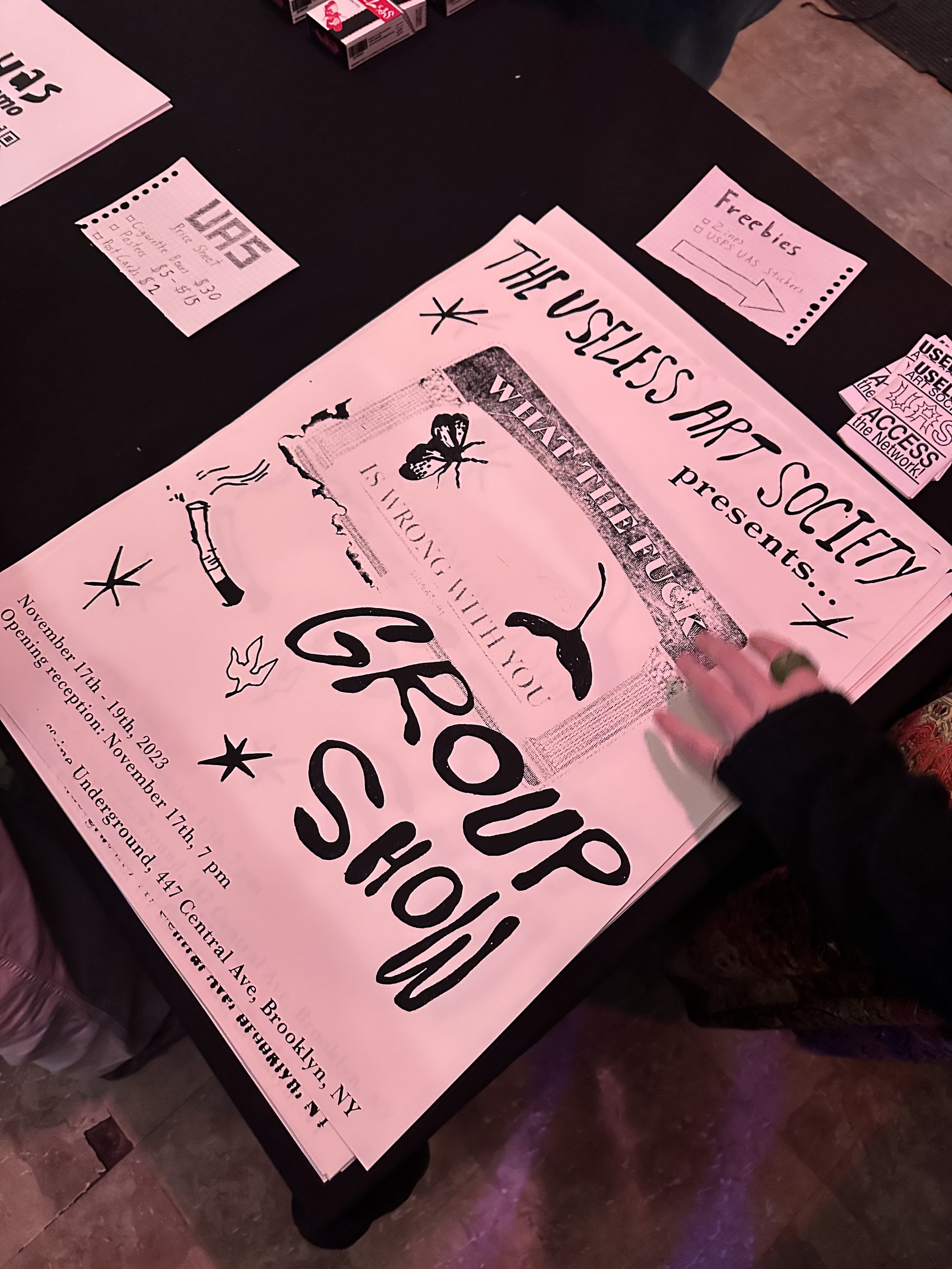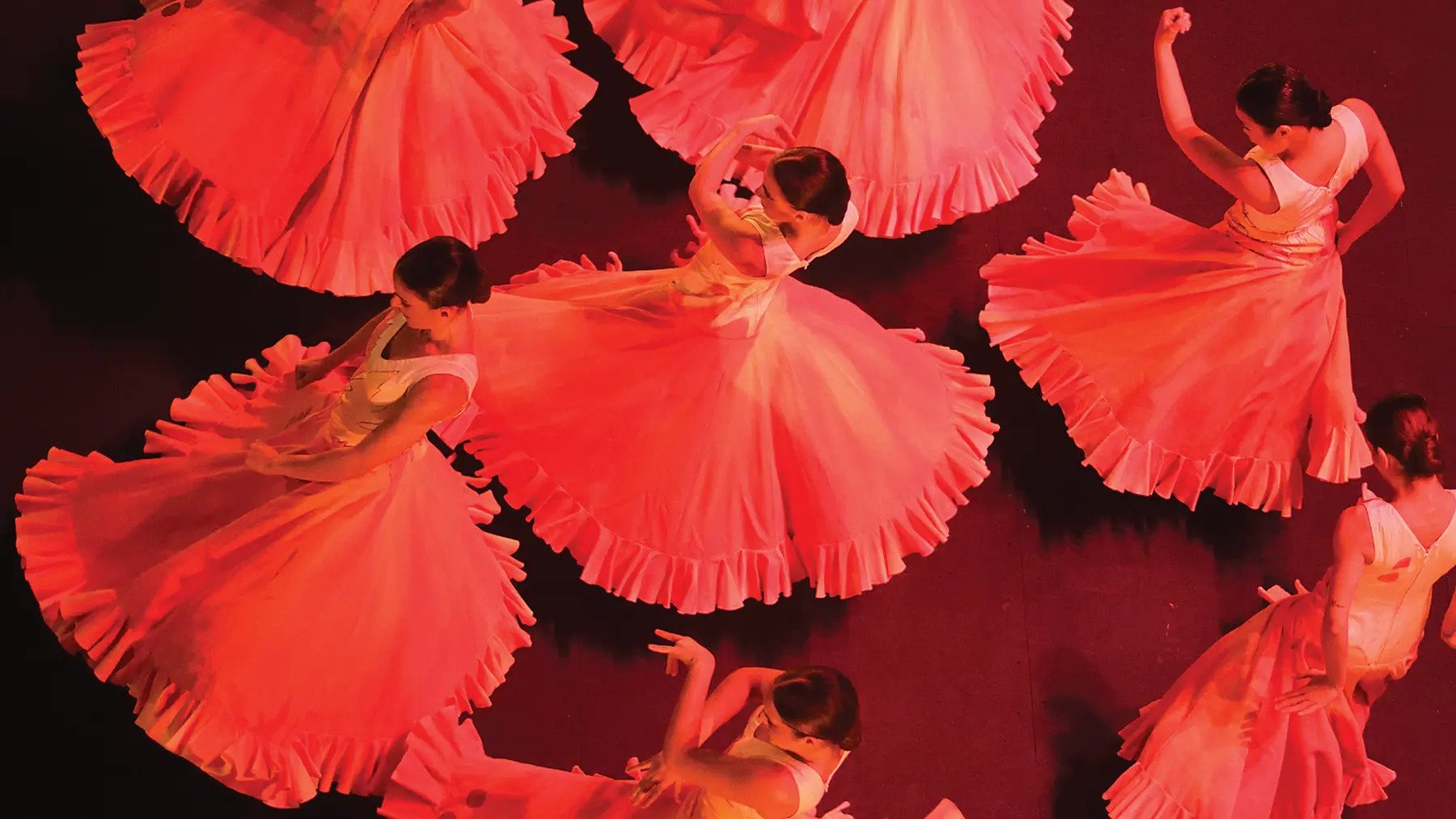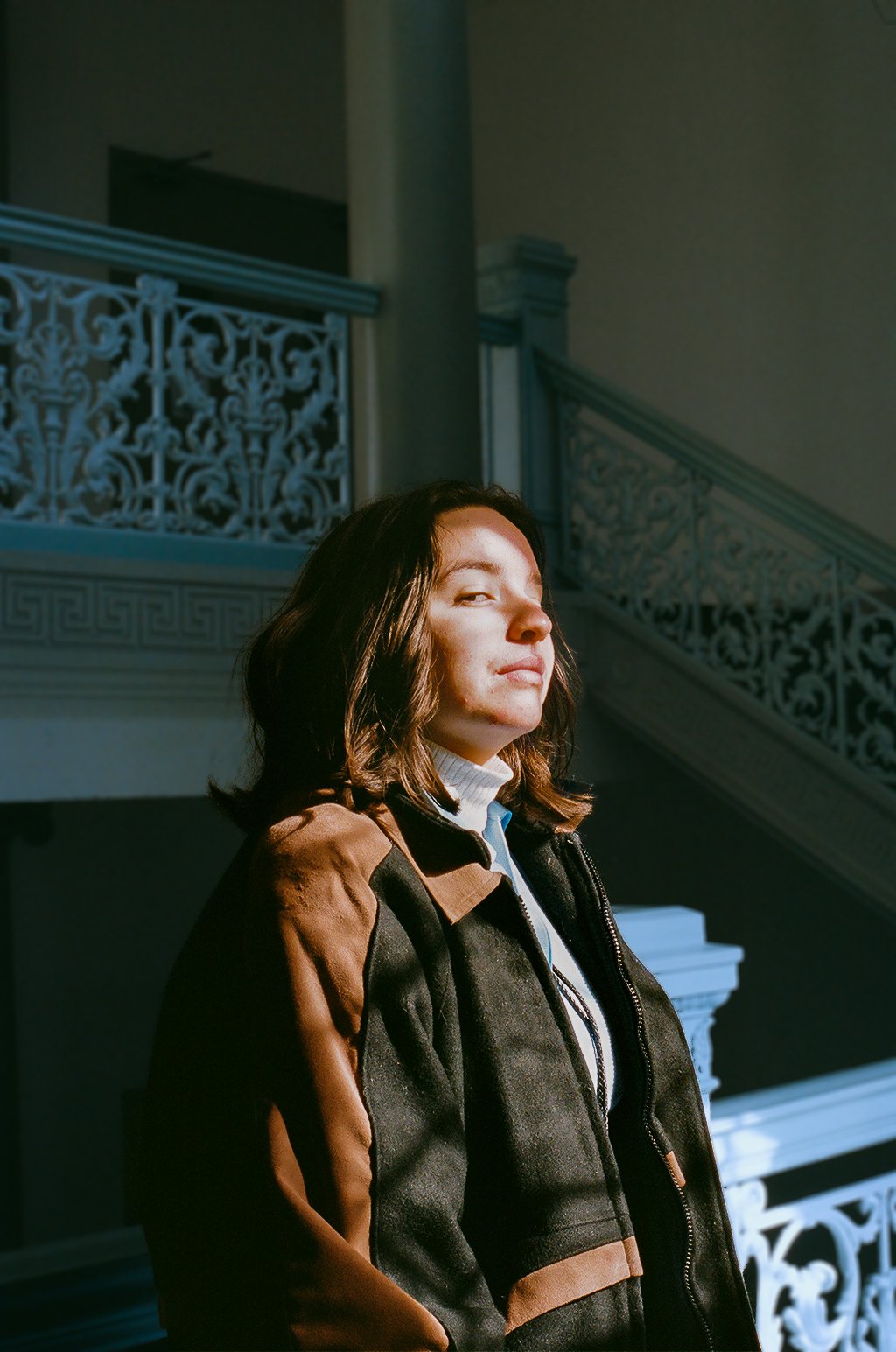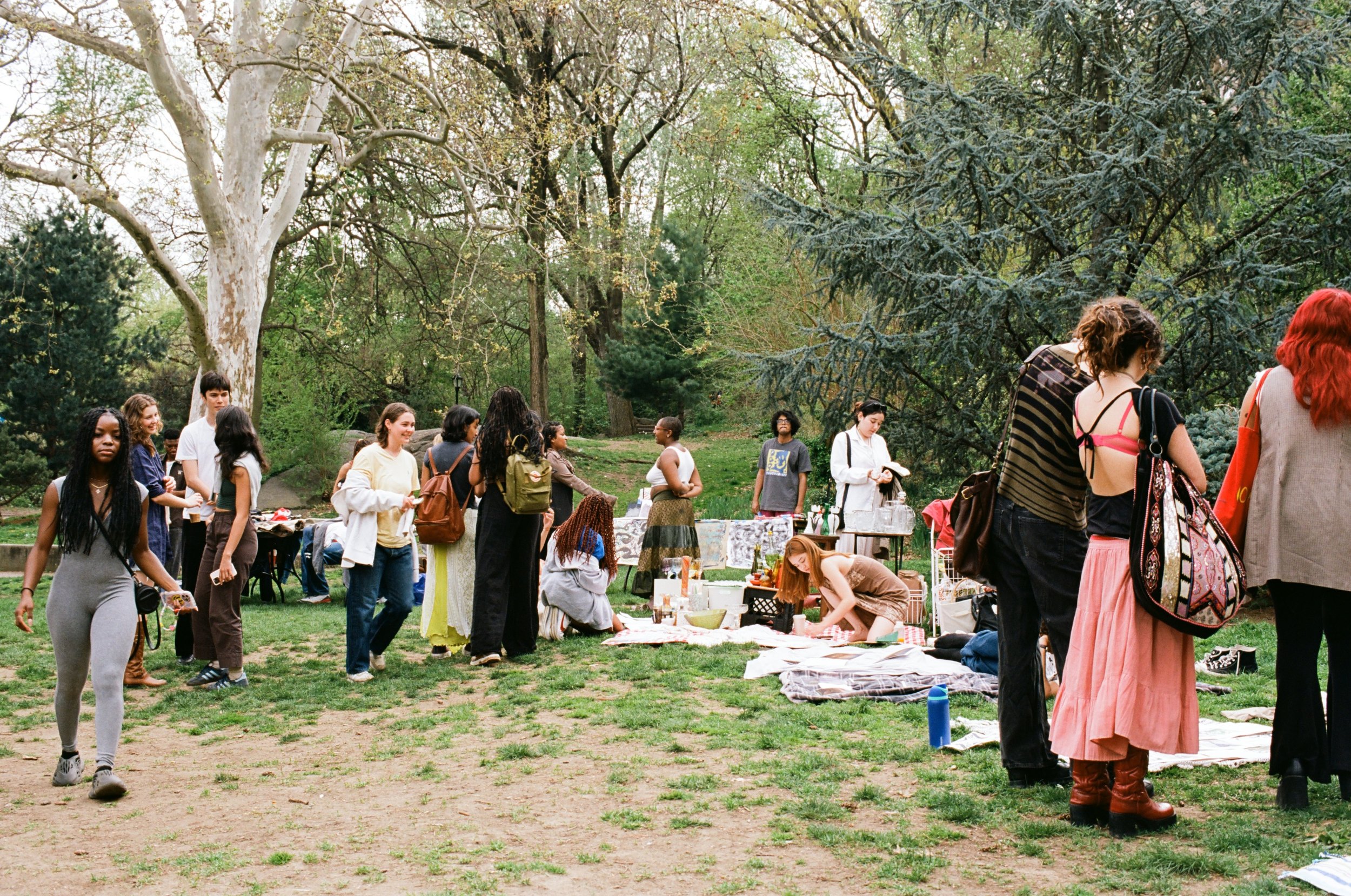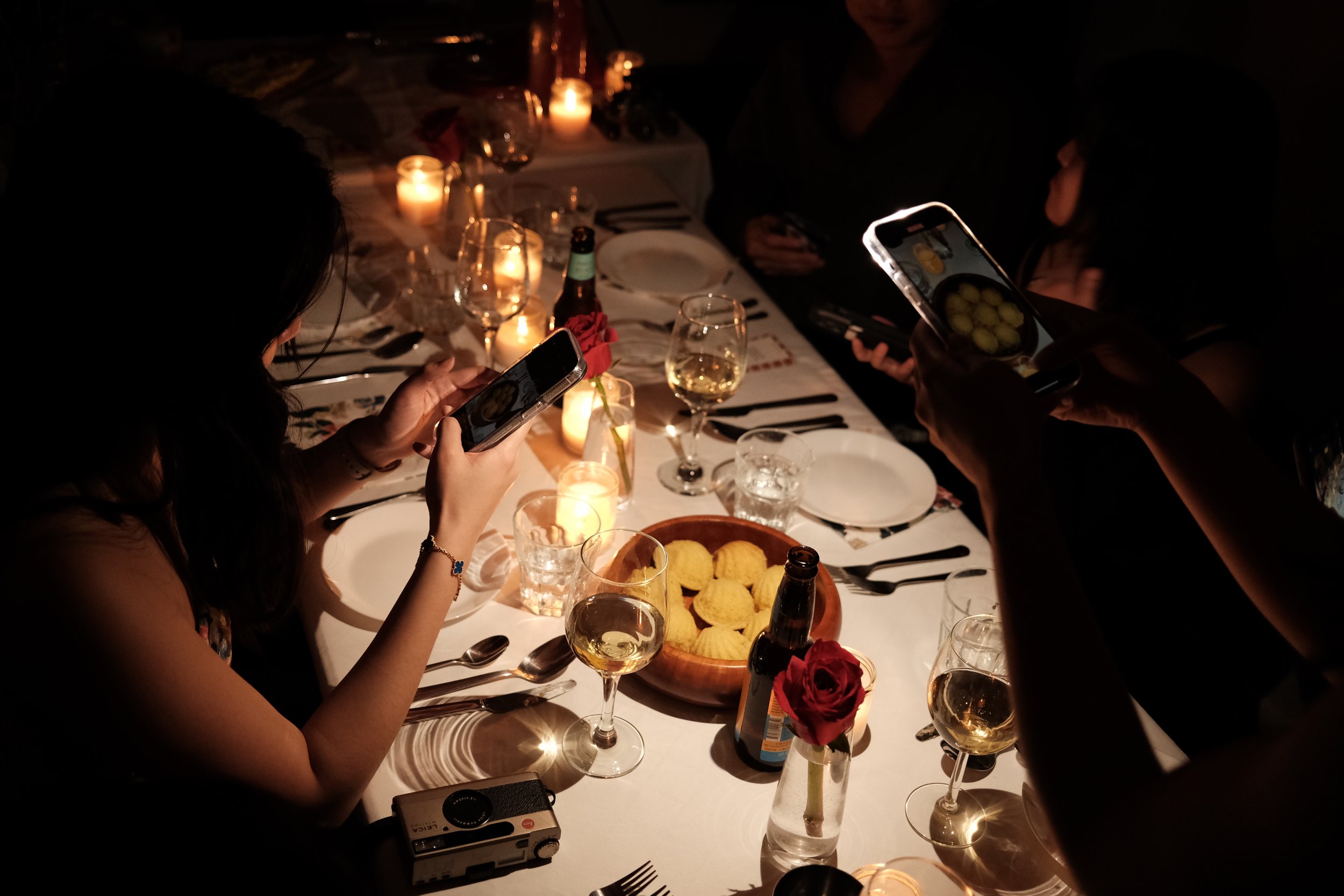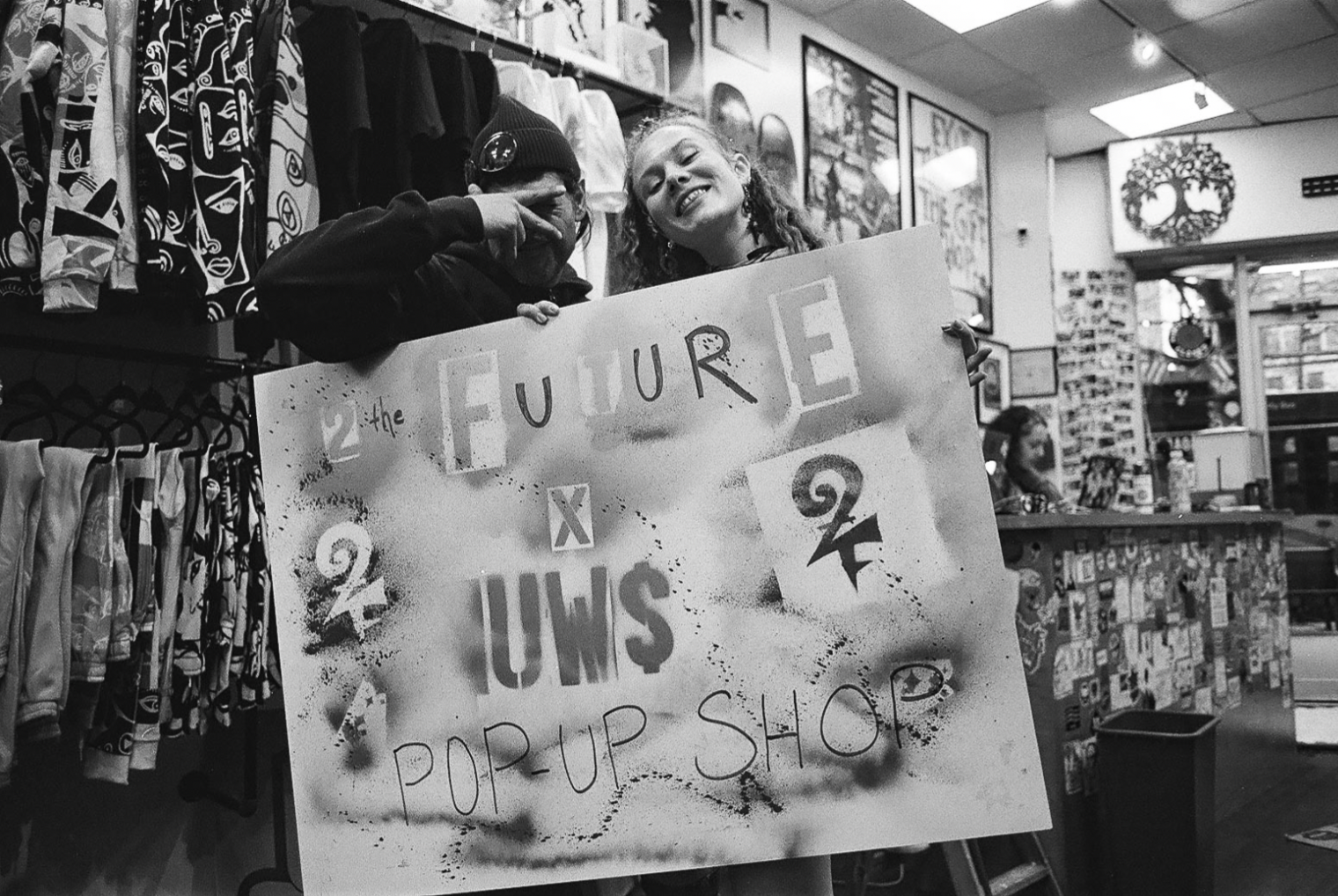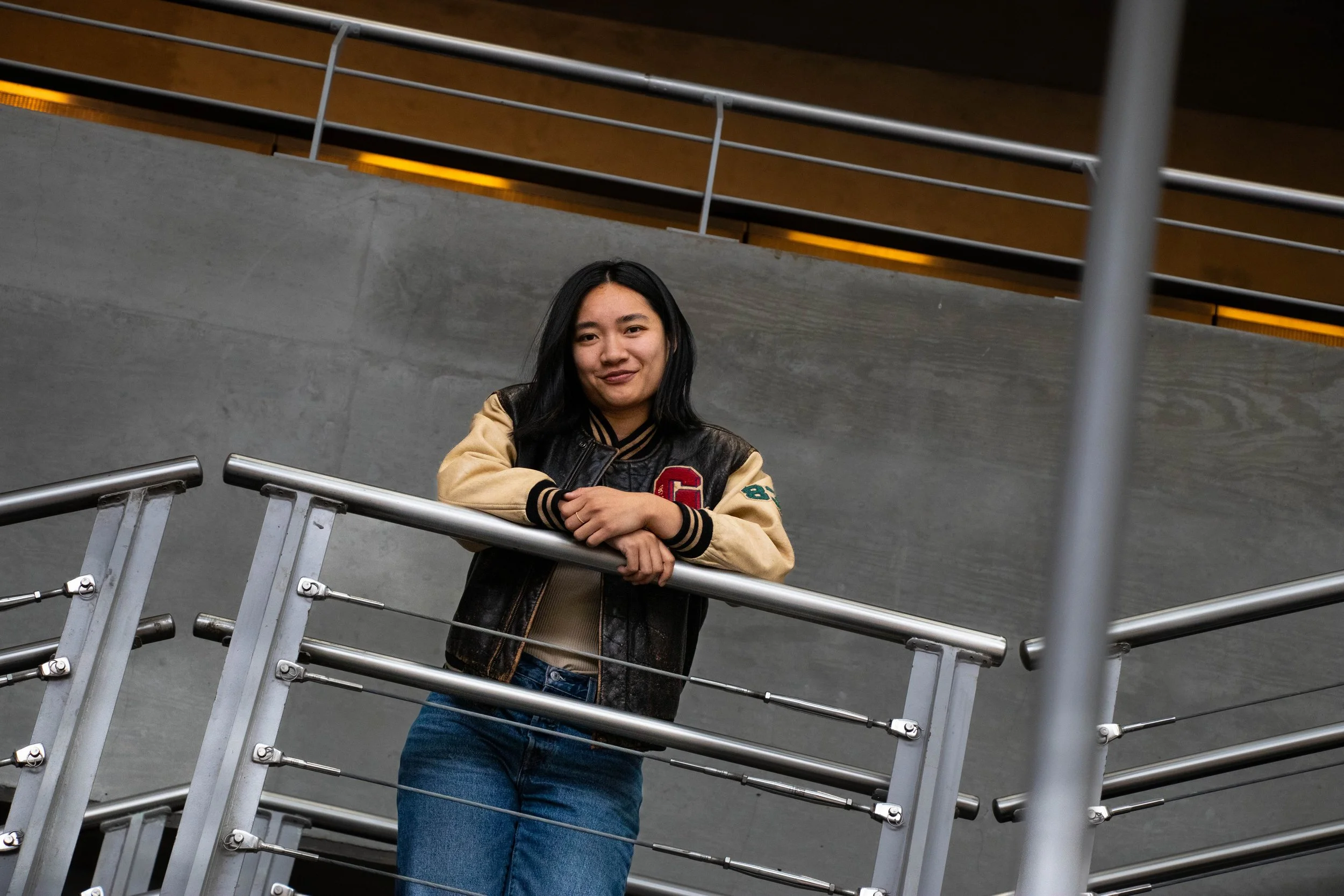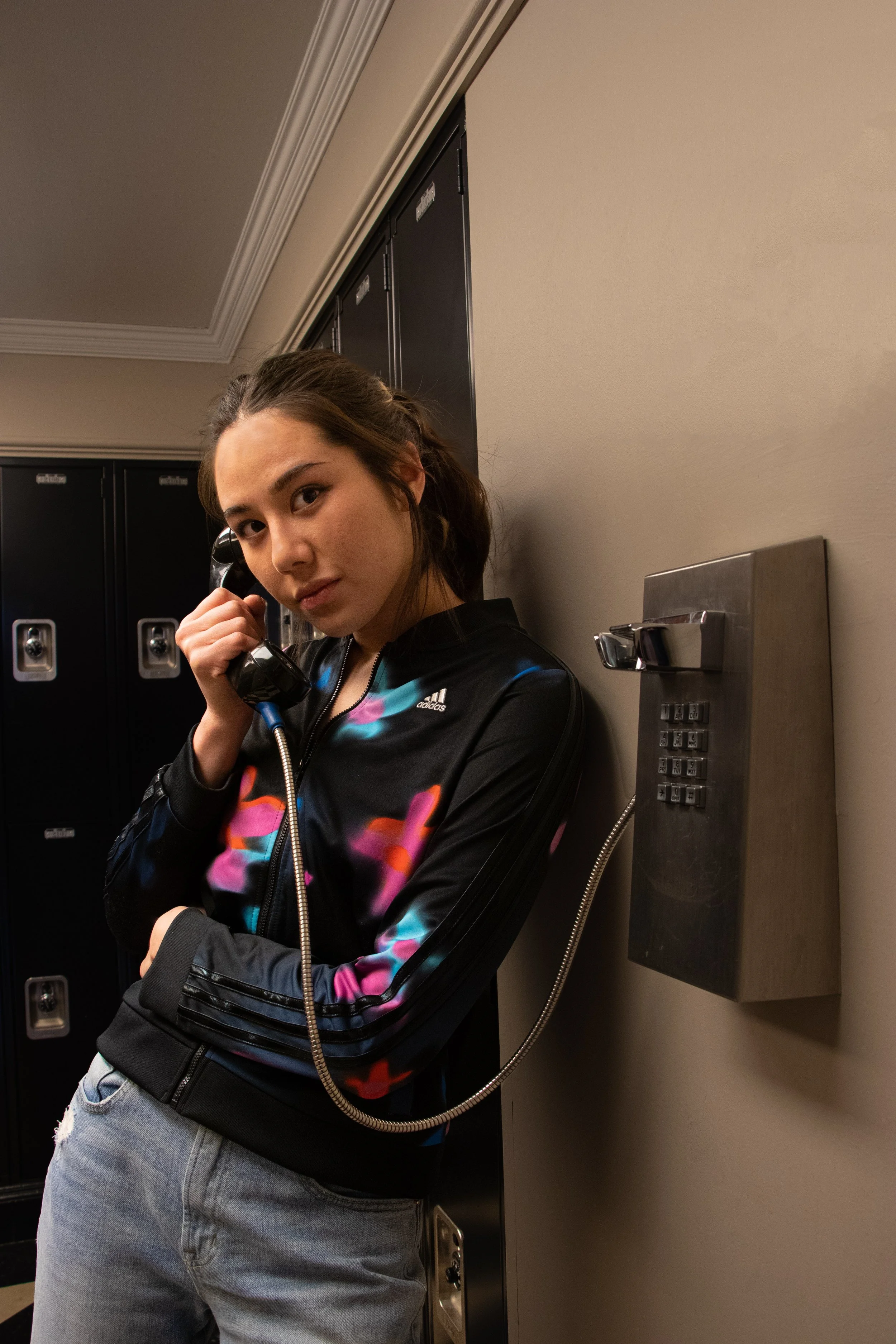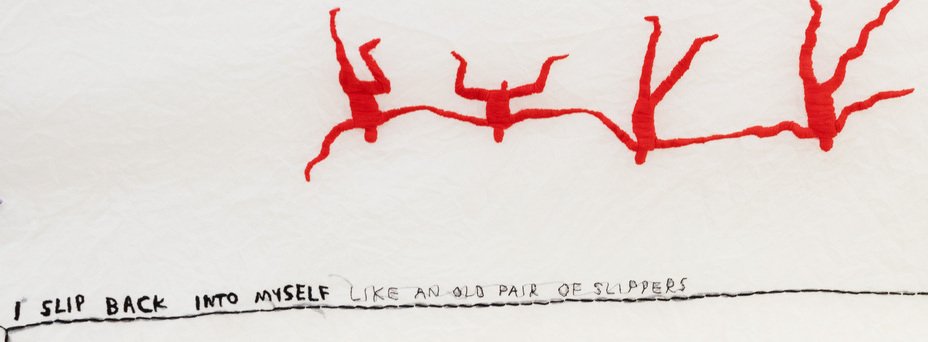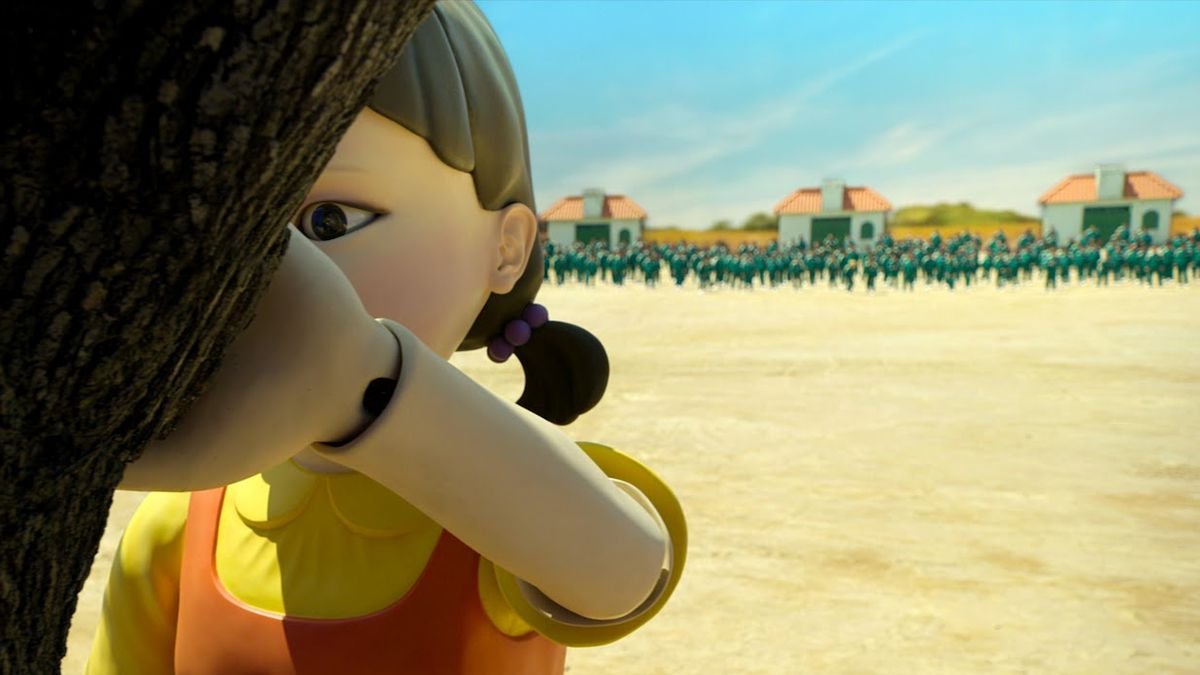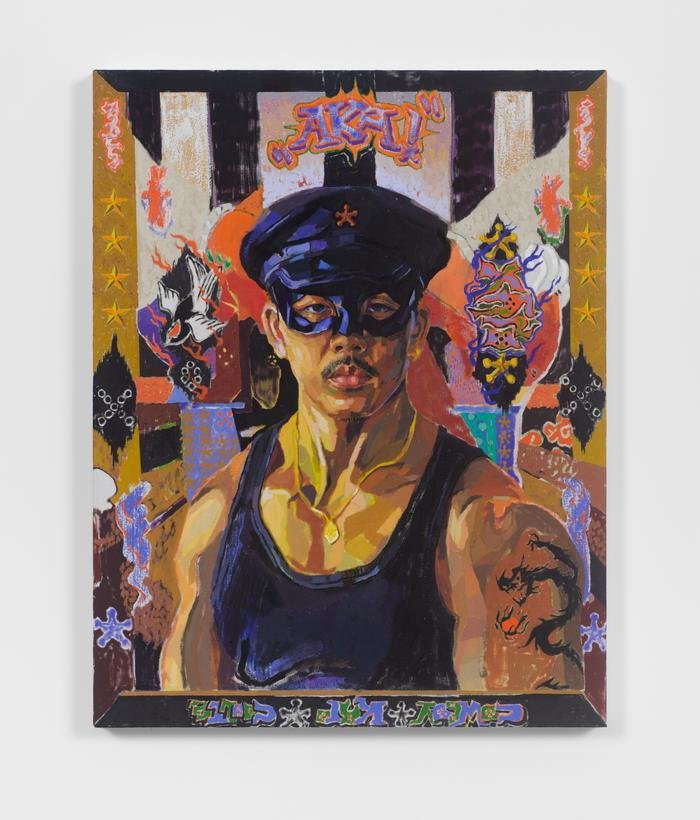Written by Cathleen Luo
Oscar yi Hou was first featured in Ratrock Magazine in 2017, when he was just a freshman at Columbia College. Since graduating in 2021, he has since become a working artist with a career on a meteoric trajectory. He is currently working on a solo show planned to open at the Brooklyn Museum this fall, and a mural for the facade of UOVO. We caught up over Zoom to talk about his post-grad experience and how his time at Columbia shaped him as an artist.
Oscar yi Hou, Courtesy of the Brooklyn Museum.
Oscar knew early on that he wanted to pursue art. In his first interview with Ratrock, he was making music, painting in his bedroom, and hosting small dorm room art shows he dubbed “Wien Salon.” It was through these intimate shows with friends and other student artists that he found a sense of community on campus. He met one of his closest friends, Amanda Ba, at Columbia, whom Oscar describes as “the core of the artist community of Columbia.” In describing how he found people on campus to support his work, Oscar says: “It wasn't necessarily my friend group and it wasn't really related to any art clubs. I met some artists through organizations like Postcrypt Gallery, but for the most part, I had to create an art community for myself.”
All American Girl, aka: Cowboy of Ohio 2020, a portrait of Amanda Ba painted by Oscar yi Hou. Courtesy of the Artist”.
A big reason why he hosted the Wien Salon was that he found the critical reviews, or “crits,” in Columbia’s studio classes “too nice.” Seeking more straightforward and honest feedback, he structured his shows as “basically a crit group: we started off doing a crit with a small group of people, then we'd open it to everyone and they could come and look.” To him, there are benefits and disadvantages to studying visual arts at Columbia as opposed to an art school, where crits can be much more brutal. At an art school, “everyone wants to be an artist in some kind of capacity so they're much more serious,” which can be intense and stifling. At Columbia, non-majors can take visual arts classes, which Oscar believes can be very eye-opening, but the flip side is that “there's not as much at stake.” Oscar half-jokes that the best thing to do as an art student at Columbia is to “take all the resources at your disposal because it's a rich Ivy League school.”
The Arm Wrestle of Chip & Spike; aka: Star-Makers, 2020 by Oscar yi Hou. Courtesy of the Artist.
From the start of our conversation, I could tell that Oscar is someone who doesn’t stand for bullshit and knows what he wants. In the same way he worked intentionally to find his people at school, he also knew that he wanted to make it in the New York art world early on. Oscar originally planned to do an additional major in math or physics, but two semesters in, he thought, “Wait, I don't like this,” and decided to focus on art solely.
Oscar explains that his motivation to work as hard as he did comes from his status as an international student, originally hailing from Liverpool, UK. “Not having American citizenship was a huge driving force. I had to self-professionalize really early on” in order to secure a working visa after graduation. He says: “I was aware that my time in the US was potentially going to be limited to just four years.” With this in mind, he knew it was necessary to “develop a cohesive body of work, have a website, a good Instagram presence, and a cohesive portfolio that galleries can look at senior year after graduation.” He succeeded, getting picked up by the downtown gallery James Fuentes right out of college.
Entitled (Chinaman 2) 2020 by Oscar yi Hou from his exhibit “A dozen poem-pictures” at James Fuentes Gallery, NYC. Courtesy of the artist.
Oscar’s aware of how ambitious his plan looked, and he’s honest about his achievement: “Having a museum show at the age of 23 is really, really abnormal, and not necessarily the best thing.” He warns that self-professionalizing early risks burn-out or being pigeon-holed into a style. Oscar emphasizes that he does not expect art students to follow the path he’s taking, and he believes in the value of taking the time to experiment after graduation and make art for art’s sake.
When he reflects on his time at Columbia, Oscar says: “New York is a very, very diverse place where I got a much deeper understanding of my racial positioning in the world.” He appreciates the courses he took at Columbia, including critical race, feminist, and queer theory classes, which introduced him to ideas that resonated with him and pushed him to further research. Though the texts he now cites in his artwork didn’t come from his class syllabi directly, he acknowledges that Columbia “definitely gave me the research foundation to be able to find books and texts on my own.” It is easy to see the ways his art expresses ideas about his cultural background as part of the East Asian diaspora, as well as ideas of queerness in his paintings of his friends and their relationships.
I had an “other-ache”, aka: God, how young I was, 2020. by Oscar yi Hou. Courtesy of the Artist.
Simply being in New York City and in close proximity to its art scene is a significant perk of being at Columbia, Oscar believes. He emphasizes the importance of participating in events outside of campus. Though he appreciated his art professors, the opportunities that he found most helpful were opportunities he sought out himself. He first entered the art world by becoming an art assistant to the painter Louis Fratino, who was not only his mentor but now a good friend.
When the pandemic hit and sent him back home to Liverpool, the arts scene, like the rest of the world, went on hiatus. Oscar had never participated in the “network-y, scene-y, kind of clouty, gallery hopping art scene” but, in isolation, it became even more apparent that this sort of social climbing was not necessary. Over Zoom, he wasn't “hounding these galleries and attending all the openings and chatting up everyone.” Instead, he was focused on building a cohesive portfolio and honing his practice. Oscar believes his art was picked up quickly because he not only had a developed body of work, but also could speak eloquently about the philosophy behind his artmaking, which is a mature position to be in as a fresh college graduate. During his “shit show” online senior year, Oscar took the time to grow his art and focus on what was most important to him.
Cowboy Kato Coolie, aka: Bruce's Bitch, 2021, by Oscar yi Hou. Courtesy of the Artist.
On the topic of the dreaded “networking” in the art world, Oscar advises against it. Though he attends his friend’s openings, he doesn’t think it is necessary if you’re just doing it to be “in the scene.” He says: “It's not about how many people you know; it's more about who you respect and who respects you. It doesn't matter how many Instagram followers you have, because if all of them are tweens or bots then it doesn't matter.” Over Zoom, I can tell that this is something Oscar believes deeply; he’s not here for the shallow connections that people cite as the stepping stones of success in the art world. It's more important to him that the people he spends time are genuine, and want to support his work for the sake of his work, not for status.
In talking about authenticity, he often finds himself more interested in speaking to other artists rather than art adjacent people. Artists can tell when you are really dedicated to your craft, and for him there is no point in trying to pretend to like someone’s art just to build a “beneficial relationship: I remember one time in freshman year, I did that to a visiting artist who made faux political nonsense. After, I just felt sick. I was like, why the fuck did I do that? Like, I think this guy's art fucking sucks. So I would just recommend focusing on your craft and genuinely putting yourself out there.”
Far Eastsiders, aka: Cowgirl Mama A.B & Son Wukong, 2021. by Oscar yi Hou. Courtesy of the Artist.
As a visual art major in my third year here, I know that almost no one in my grade knows what to expect after graduating. To hear how someone’s “made it” gave me, and hopefully others, some sense of comfort in the uncertainty of post-grad life.
Oscar has a very specific vision for himself, and through focusing on his practice religiously and seeing beyond meaningless networking, he stays true to his art. He reminds me that his path is not everyone’s path; even his best friend Amanda has a totally different career trajectory than him, but she is still doing amazing work. He emphasizes not to kiss people’s asses and find artists that support your art in the same way you’ll support theirs. Genuine connections in the art world come from shedding superficiality and celebrating the practice as it is. Everything else will fall into place as it comes.

